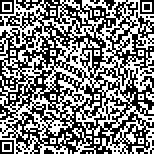下载中心
优秀审稿专家
优秀论文
相关链接
摘要

利用3个火星轨道器获取的热红外波段探测数据,分析了火星表面亮温在时间维上的年际和季节性变化规律,以及空间维上随地形和纬度的变化特征。研究结果表明:(1)5个火星年的表面亮温年际变化幅度均未超出轨道器热红外波段探测数据的精度范围。(2)火星南半球表面亮温的季节性变化幅度大,远日点时期表面亮温随季节的变化基本符合正弦规律且年际差异小,而近日点则有多处明显偏离正弦规律且年际差异较大;北半球表面亮温的季节性变化幅度远小于南半球,且季节特征不明显,受全球性尘暴影响而引起的夜间升温要大于夏季太阳辐射能增加引起的升温。(3)在同一时段,盆地、峡谷等低海拔地形的表面亮温较高,而山峰、高原、台地等高海拔地形的表面亮温一般较低;Olympus Mons地区的表面亮温与高程之间存在相关系数为-0.9072的负相关关系,线性拟合的结果表明该区域海拔每上升1 km,表面亮温下降约1.4 K。(4)表面亮温随纬度的变化总体上满足低纬度高于高纬度的规律,但受到地形等因素的影响,表面亮温最大值出现在偏离赤道的35°S位置,而赤道附近纬度的表面亮温最小值要小于临近稍高纬度位置的最小值;从赤道到两极同纬度表面亮温的差异逐渐减小。
This paper presents a comprehensive analysis of the patterns of spatio-temporal variations in the Mars Surface Brightness Temperature (SBT) by using thermal infrared data acquired by three orbiters. Inter-annual changes in SBT are determined by comparing temperature data from different thermal infrared sensors, with spectral and local time corrections. Seasonal variations in the northern (NH) and southern (SH) hemisphere night SBT are presented with four Mars-year Thermal Emission Spectrometer (TES) data. The influences of the latitude and altitude on night SBT are analyzed based on TES measurements. The discrepancies between the adjusted Infrared Thermal Mapper (IRTM) band-B and the Mars Climate Sounder (MCS) band-A4 measurements are 1.3 K and 1.0 K for day and night SBT, respectively. The differences between the IRTM band-B and the average TES Mars Year (MY) 24-26 are 3.1 K and 2.1 K for day and night SBT, respectively. During the aphelion period, seasonal changes in SH night SBT conform well to the sine curve, and the inter-annual variation is lower than 3 K. However, the seasonal variation greatly diverges from the sine curve; the inter-annual difference is significant during the perihelion period. By contrast, NH night SBT exhibits no clear seasonal trend; the variation of this parameter is smaller than that of SH. No signs of the sine-curve pattern are displayed. Night SBT increased by approximately 17 K in NH and SH during the MY 25 global dust storm. When Ls is 115°-125°,NH SBT is obviously influenced by topography, whereas the SH SBT isotherms are nearly parallel to the latitude lines. Some plains, such as Acidalia Planitia, Chryse Planitia, Isidis Planitia, and Utopia Planitia, are warmer than their surrounding areas; moreover, high-altitude regions, including Arsia Mons, Alba Patera, Elysium Mons, Terra Sabaea, and Olympus Mons, have almost the lowest SBT, except for the Polar regions. When Ls is 295°-315°, the SH isotherms are fragmentized, which corresponds to the cratered surfaces. The NH isotherms in winter are only parallel to the latitude lines north of 50° N. The maximum SBT gradually decreased from the equator to the poles, except for 35° S. The minimum SBT between 15° S and 35° N are lower than that of the higher latitude regions because of the influence of to pography. The SBT standard deviations and differences between maxima and minima reveal the same law, that is, the closer to the equator, the higher are both values. Conclusions:The following conclusions are reached. (1) The 5 Mars-year inter-annual variation in SBT is within the precision range of measurement and processing; thus, the detection of Mars climate change is not feasible using current thermal infrared measurements. (2) The inter-annual difference in SBT during the perihelion period is higher than that during the aphelion period. The amplitude of seasonal variations in NH is smaller than that in SH. Increased SBT in NH caused by dust storm is higher than that caused by increased solar radiation in summer. Low-altitude topographies, such as basin sand canyons, exhibit higher temperatures than high-altitude topographies, such as mountains, terrains, and plateaus. Night SBT exhibits a strong negative correlation with altitude in Olympus Mons. The linear fitting result indicates that night SBT decreases by approximately 1.4 K as the altitude increases by 1 km. Night SBT at low latitudes is generally higher than that at high latitudes. Influenced by factors, such as topography, the SBT maximum exists at 35° S instead of the equator. The SBT minima at the latitudes close to the equator are smaller than those at high latitudes. The lowlatitude SBT varies more intensely than those near the polar latitudes.

